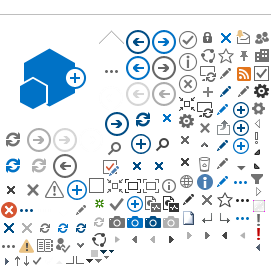The development of global maritime radiocommunications and radionavigation has been part of ITU's work for over a century. Invented in 1890s, wireless telegraphy, the first type of radiocommunications, was brought into use over a very short period, including for maritime safety. For radionavigation services, ITU has contributed to key developments in positioning systems, including the terrestrial hyperbolic navigators and satellite technologies such as global navigation satellite systems.
The ITU Radiocommunication Sector (ITU-R) manages the radiofrequency spectrum for radiocommunication services worldwide – everywhere on Earth and in space – including maritime radiocommunication and radionavigation. The protection of maritime radiocommunication and navigation frequencies is ensured through special provisions in the Radio Regulations (RR). The Radio Regulations allocate radio frequencies to maritime radiocommunication services to ensure their protection from harmful interference from other types of radiocommunication services. The RR are updated at World Radiocommunication Conferences (WRCs), after having reviewed the results of compatibility studies between maritime and other radiocommunication services. The worldwide usage of maritime equipment and its global interoperability are supported by ITU recommendations, technical standards and reports.
Around a quarter of the articles in the Radio Regulations are related to the use of maritime radio, contributing to safety at sea. For example, by international agreement, Cospas-Sarsat distress transmissions from emergency radio beacons take place in a globally recognized frequency band that is protected from any adjacent band interference, where other in-band transmissions are strictly prohibited. ITU's special radio monitoring programme of this band is aimed at ensuring the availability of this important band for use by Emergency Position-Indicating Radio Beacons (EPIRB) to transmit distress alerts.
Automatic Identification System (AIS)
ITU and the International Maritime Organization (IMO) introduced the automatic identification system (AIS) to improve the safety of navigation and monitoring of shipping worldwide. AIS radio equipment is mandatory onboard all commercial ships on international voyages and contributes daily to the safety and monitoring of ships worldwide. ITU-R developed the technical document for the AIS.
Global Maritime Distress and Safety System (GMDSS)
The Global Maritime Distress and Safety System (GMDSS) is an internationally agreed set of safety procedures, frequencies, types of equipment, and communication protocols, developed through cooperation between IMO and ITU since the 1970s. It covers the use of terrestrial and satellite radio technologies onboard ships and onshore, making it easier to rescue distressed persons, ships, boats, and even aircraft at sea. The system alerts shore-based rescue and communication personnel via the coast radio station or Rescue Coordination Centres (RCC) in cases of distress and emergency and makes calls to vessels in the vicinity to request assistance.
The GMDSS are continually reviewed and enhanced, on a global basis. ITU's World Radiocommunication Conference 2023 (WRC-23) took a notable step towards the introduction of a third GMDSS satellite system, in addition to the existing Inmarsat and Iridium systems. WRC-23 provisionally recognized the BeiDou Message Service System for GMDSS use, subject to the successful completion of coordination with the existing networks and elimination of interference.
The Conference also included the medium- and high-frequency Navigational Data (NAVDAT) system in the RR Appendix 15, which provides frequencies for distress and safety communications. The relevant regulations were modified to integrate the NAVDAT system into the GMDSS for broadcasting meteorological information, navigational warnings and urgent information from Coast Stations to ships. NAVDAT has the potential to enhance navigational safety by providing ships with relevant up-to-date information.
Another WRC-23 decision removed medium- and high-frequency narrow-band direct printing (NBDP) for distress and safety communications from the RR. Instead, new provisions enable the use of an automatic connection system (ACS) using digital selective calling (DSC) on frequencies previously reserved for NBDP. These modern technologies will ensure efficient radio spectrum use, while giving seafarers more reliable access to required radio links.
Maritime Service Publications and MARS
ITU also seeks to support and improve ships' operational safety through several key publications and the Maritime mobile Access and Retrieval System (MARS), an online maritime database system used by mariners, rescue centres operators and administrations to access the detailed information of ITU-registered ships. This database covers onboard radio communication systems, radio call signs, Maritime Mobile Service Identities (MMSIs) and emergency contact details (e.g. owner name, 24-hour emergency phone numbers and onboard satellite terminal numbers, etc.) which may be essential in resolving distress situations at sea. The MARS also includes Coast Stations, Search and Rescue (SAR) Aircrafts and AIS Aids to Navigation (AtoNs) for shipping and shore authorities worldwide. For Coast Stations and Rescue Coordination Centres, it is easy for seafarers to find information concerning watch frequencies and hours and services offered such as medical advice or weather warnings, among others.
International technical standards
ITU issues international technical standards, developed by experts from administrations, operators, the industry and other organizations dealing with radiocommunication matters from all over the world. For example, several key standards relate to the digital switchover of maritime communication (Rec. ITU-R M.493, M.541, M.2010, M.2058, M.2092 and M.1371).
Learn more about ITU's role here.
Last update: January 2025
